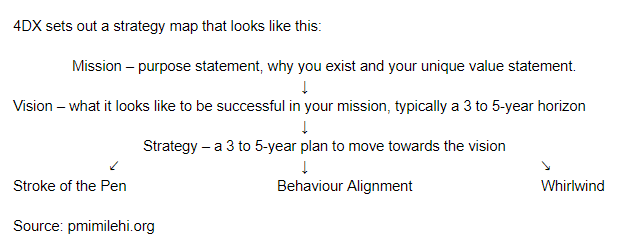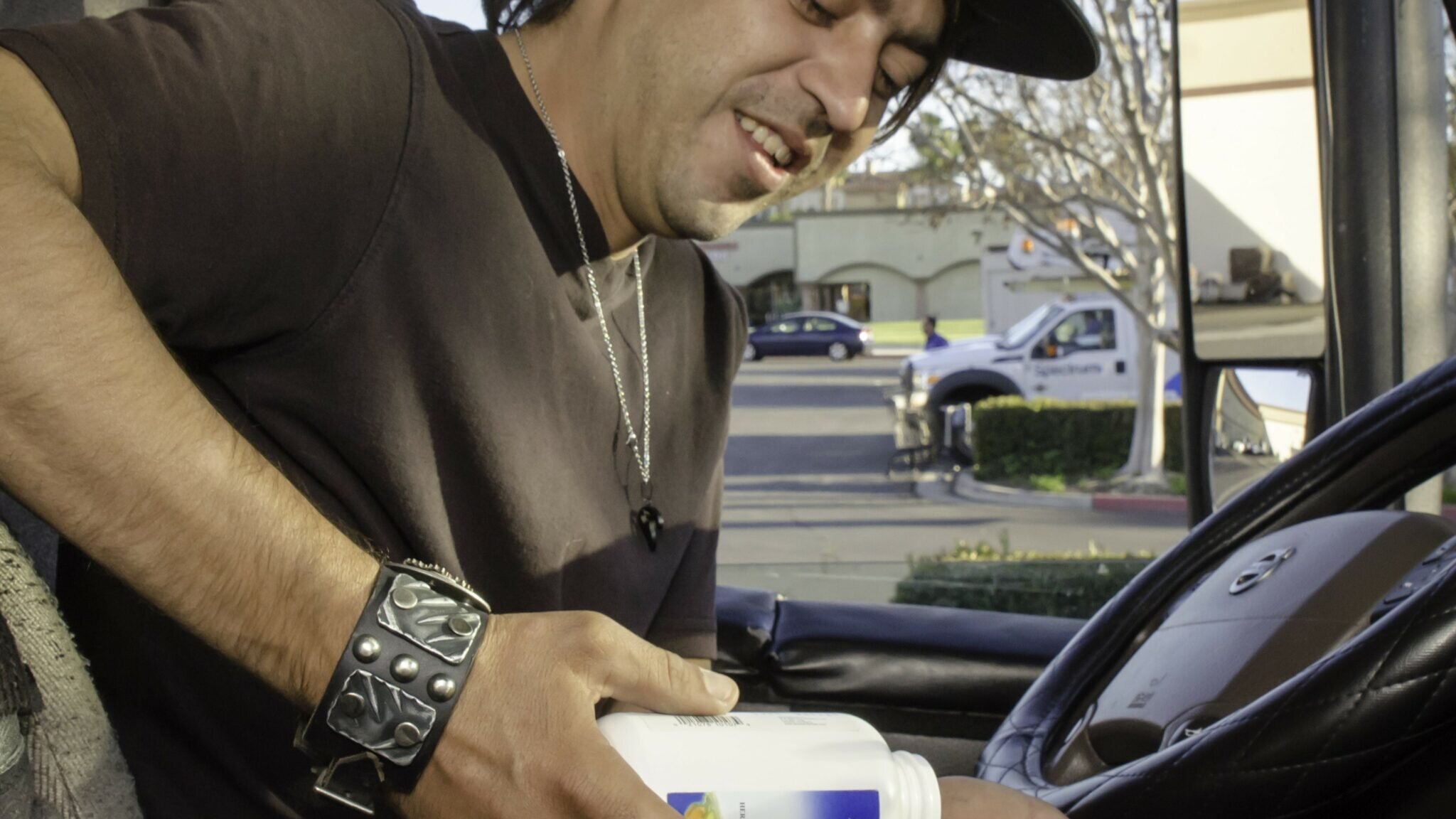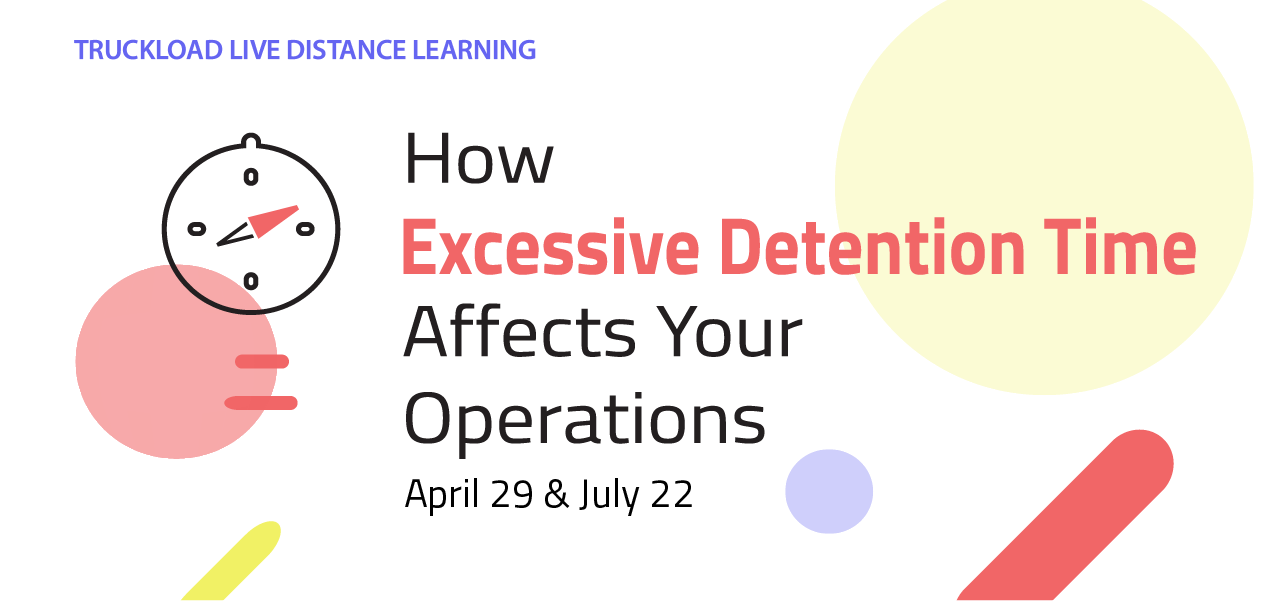
(PHOTO: SHUTTERSTOCK)
Recently, at an industry event, I was asked by a TPP member what my single largest career goal was. Luckily, I had already contemplated this exact question in my head for some time. The answer I provided was to “Increase the average Driver to Non-Driver ratio among TPP members from the current 4.9:1 to 10:1 by 2025”. To be more specific, this KPI (Driver to Non-Driver Ratio) is a clear measure of the leverage that trucking enterprises have on their human investment. There is a direct correlation of this measure to higher profitability. To put this goal in perspective, if companies were to reach this goal, it could reduce their Operating Ratio by 3.5 to 4.8% percentage points (based on TPP 20 Index participants).To calculate on your own, simply divide the # of active drivers (have had one payroll or settlement record in month) by the number of active operations, admin, finance, safety and recruiting staff. Make sure to use the Full Time Equivalent calculation to be more exacting.
Those with higher ratios indicate two things to me: 1) A focus on operational efficiency and technological sophistication, and 2) Operating attributes (e.g. Freight, lanes, drivers, customers), that are ‘lower maintenance’ than others – low touch freight, longer lengths of haul etc. It’s not realistic to think that TPP can affect the later, in fact the variables that companies need to juggle are increasing, not decreasing in general. However, it’s part of our mandate to affect the former. In order to achieve this goal, we need to provide a conduit to affordable solutions and concepts to ensure our members are making continuous improvement with respect to operational efficiency, while also not sacrificing driver or customer service. It’s something I’m passionate about. It’s something that is mutually beneficial to all parties involved in TPP.
The 4 Disciplines of Execution
Every leader struggles to keep their teams focused while dealing with an ever changing environment. Juggling the micro (customers, loads, weather), with the macro (consumer trends, competitive forces, regulations). What seemed important yesterday gets put on the back burner by the latest crisis – it is quite literally an endless treadmill. At the end of the year you may look back and say, “why didn’t we get that done?”. Most leaders are ambitious by nature – we all want to conquer the world and everything that it throws at us. Some of us consider saying “no” as a sign of weakness or fear. As a result, we take on more than is possible to achieve. To complicate things, even if we don’t take on too much, our goals are either seen as not important enough, or not defined well enough to give our teams the focus (and the energy) that is needed. If only there was a better way, if we could do more with less. Franklin Covey’s 4 Disciplines of Execution (4DX) method is what you are looking for.
The 4 Disciplines of Execution is both a program offered by Franklin Covey (for more information, click here), as well as a book written by Chris McChesney, National Execution Practice Leader for Franklin Covey, Sean Covey, Executive VP of global Solutions and Partnerships for Franklin Covey and Jim Huling, Managing Consultant for Franklin Covey’s 4 Disciplines of Execution.
The three authors describe “The 4 Disciplines of Execution as precise rules for translating strategy into action at all levels of an organization. When applied, “the 4 Disciplines produce extraordinary results by tapping the desire to win that exists in every individual.” (Forbes – 2012/04/23) The implementation of 4DX is not a top-down, nor a bottom-up process. It requires the involvement of senior leaders but at the same time gives team leaders at lower levels the freedom to define their own goals that will contribute the most to the overall goal. In short, leaders only veto, never dictate so that teams will be fully committed to the goals and to be accountable for their results.
The Franklin Covey website states that the 4DX Process has been refined to achieve 3 objectives:
-
High quality implementation in the shortest time.
-
Maximum leader and team engagement with minimum disruption to business operations.
-
Sustainable WIG (Wildly Important Goal) results through full process adoption (new habits).
The 4 Disciplines:
-
Focus on the Wildly Important Goal – only 15% of employees know their organization’s most important goals – either there are no goals, or they have too many goals. Extraordinary results can only be achieved when you are clear about what matters most. As simple as this principle may sound, few leaders ever master it. 4DX teaches why focus is so critical and how to overcome your biggest source of resistance.
Tim Cook, CEO of Apple puts it this way: “We are the most focused company that I know of, or have read of, or have any knowledge of. We say no to good ideas every day. We say no to great ideas in order to keep the amount of things we focus on very small in number so that we can put enormous energy behind the ones we do choose. The table each of you are sitting at today, you could probably put every product on it that Apple makes, yet Apple’s revenue last year was $40 billion.” There are a few rules that apply to keeping focused:
· No more than 1-2 WIGS per team or person.
· The battles have to win the war.
· You can veto, but don’t dictate.
· Every goal must have a gap from X to Y by When.
-
Act of Lead Measures – Too many people don’t know what critical activities provide the greatest leverage to achieving team goals. With unlimited time and resources, you could accomplish anything. Unfortunately, your challenge is usually the opposite: accomplish more with less. 4DX shows leaders where they can find real leverage and how to use it to produce extraordinary results.
-
Keep a Compelling Scoreboard – People play differently when they are keeping score. You also have the authority to make things happen, but you want more than that – you want the performance that only passion and engagement can produce. 4DX enables leaders to rise from authority-driven compliance to passion-driven commitment in themselves and the people they lead. Ensure that the scoreboard is a player’s scoreboard – it should be simple; highly visible to the players; has the right lead and lag measures; and tells you immediately if we are winning or losing.
-
Create a Cadence of Accountability – Fewer than 10 percent of people meet with their manager at least monthly to discuss their progress on work goals. No matter how brilliant your plan or how important your goal, nothing will happen until you follow through with consistent action. 4DX brings the practices that drive accountability and follow through, despite a whirlwind of competing priorities. To maintain this accountability, weekly or daily meetings are held that focus on the WIG. These need to be held regularly and should not take longer than 20 minutes. In these meetings each member reports on: Did I meet last week’s commitments; Did I move the scoreboard; What will I commit to for this week? It’s human nature for people to commit to their own ideas before they commit to orders from above. Leverage this! Also, by making these commitments publicly in the meeting, they are transforming the commitments from job performance to a personal promise – a very self motivating shift in mindset.
Ultimately, Discipline 4 is the most crucial. It is the discipline where the actual “game” is played. However, without Disciplines 1 to 3, you will not have a winnable game. Chris Chesney summarizes the 4 Disciplines in this video. Brian Johnson takes a more in depth look in this video.
There are a couple of key reasons why execution is so difficult. The first is that people must change their behaviour, something that is never easy. 4DX identifies two different types of strategies. The first is referred to as “stroke of the pen”. This includes items such as capital investments, expansion of staff, changes in policies or programs and strategic acquisitions. The second type is Behaviour Change. This includes things like improved customer service, process adoptions, higher quality services, faster responsiveness and operational consistency. (Source: pmimilehi.org)
Stroke of the Pen strategies are relatively easy to implement and are top-driven. Behavioural Change is much harder to implement but results in lasting change and potentially a major shift in how the organization operates. Think of any time that you have achieved a goal. It probably required you to do something that you have never done before. It wasn’t easy, was it? You likely had to dig deep down to pull it off. You had doubts that you would be able to do it and even why you should even try at all. It’s human nature to want to leave things as they are – for a lot of people change is scary. This is why the first three Disciplines are needed. It’s really just common sense – communicate to people why they need to change and where it fits with the organization’s goals. In short – tell them why it’s important. Explain what are the crucial steps that are going to define success. Finally, motivate the troops so that THEY feel passionate about winning (otherwise known as making the necessary change). If you are going change people’s behaviours, you really need them to be 100% onboard or your chances of success will be minimal.
The second challenge to execution is implementing these changes in an environment that’s already swirling with urgent priorities (what the authors call the Whirlwind). If you want the initiative to succeed, you need to have it cut through the background noise so that everyone sees that it is of the utmost importance to implement. Again, this just makes sense. If everyone is constantly being bombarded with competing “goals” that are all “the most important”, they are just going to tune them all out unless they are given a reason to believe that one is more important. If you make it easy for them to see which goal is the most important, you give them the clarity needed to focus on it.

The authors (Forbes interview 2012/04/23) give three specific requirements for concentrating your time on what’s most important:
-
The leader must narrow their focus. Because leaders are always drawn to new ideas, this is not only hard to initiate as well as being difficult to sustain. Leaders need to learn how to say “no” or “not now” to new ideas until the results on the strategy have been achieved.
-
The leader needs to focus on leading outcomes of behaviours, not overall results. This is probably a 180 compared to the normal focus on results. The leader needs to be playing the long game, understanding that changing the outcomes or behaviours will lead to better results. Think of it as needing to learn how to crawl before you walk, and that learning to walk must happen before you can run. Skipping steps may seem expedient and lead to a quicker “result”, but it is probably at the cost of not being sustainable. Once the focus is off, your staff could likely fall back on “the way we always did it”. Not only will the point of what you tried to implement be lost, but staff will probably become more cynical about future initiatives, making them less likely to succeed. The authors put it like this: “focusing solely on results doesn’t drive the highest performance – it’s like driving a car while looking in the rear-view mirror.”
-
Create a sense of shared accountability. When accountability is only felt between each team member and their boss, the effect is limited. Make team members feel accountable to each other and performance shifts from being professional to personally important. Most people will work hard to avoid disappointing their boss, they will work even harder to avoid disappointing their team. The result is a significantly increased level of performance and follow-through.
Much of 4DX rests on the principle of diminishing returns – the more you try to do, the less you accomplish. Most of us are ambitious and want to do more, even when we know we shouldn’t. It’s hard to say no or not now to a good idea, even more so if it is a great one. However, there will always be a lot of good ideas, more than you or your team can execute. Therefore, the first Discipline is focusing on the Wildly Important Goal (WIG). You need to start with one (or at most two) wildly important goals to avoid trying to improve everything at once. The term “wildly important” makes it clear to the team that this is what will matter the most. Just setting the WIG is not enough – it must have a clearly measurable result as well as a target date for the result to be achieved. As simple as this seems, the authors have found that most leaders struggle to reduce their strategic concepts into a single “from X to Y by When” finish line, even though this delivers a tremendous degree of clarity to the team.
To understand why you want to keep a compelling scorecard, think about a group of teenagers playing basketball and how they change once the score is being kept. It’s simple – people play differently when they are keeping score. You have already defined what is required to “win”, but people need to see where they are in terms of achieving that win. Everybody likes to be a winner. Think of the effort that a team puts in when they are in the bottom of the ninth of the seventh game of a series and are down by a run. The definition of success is clear, everyone understands what they need to do to achieve the goal and there is no other option but to execute. You need to offer the same thing for your team. The scorecard needs to be designed to motive the team members to play to win. Keep it simple, visible, have the right leading and lagging measures and make sure that it tells them immediately if they are winning or losing. So, if your goal is to increase sales of Product X by 15% by December 31st, show the team where they are sitting – if it’s at 14%, and they see that there are Z dollars worth of orders in the pipe then it’s simple for them to understand how much more in additional sales needs to be found. And if the goal has already been met, then stretch the goal. Keep it attainable, and even better, let the team set it. That’s the ultimate in making the team members accountable to each other. Have them determine what each member is going to do, set the total as the new target and watch the performance. Think of it, who wants to be the one that let the team down? The team will be committed to achieving the goal and will put their maximum effort at achieving it. That sort of comradery can be sustained, reinforcing the new behaviours and aiming them towards higher performance.
Covenant Transport used 4DX to help improve their driver turnover (source: pmimilehi.org). They stated that they wanted to reduce turnover from 106% to 86% by the end of 2013. The next step was to determine the fewest number of battles that are necessary to win the war. Covenant came up with three:
-
Improve On-Time Home-Time from 82% to 92% by year end.
-
Reduce Repair Wait Time from 29 hours to 24 hours by year end.
-
Increase Driver Engagements with a target of 10,000 positive contacts.
These are all lag measures, so lead measures are now required. Specifically looking at the Repair Wait Time, the Parts Department was challenged to deliver on two things:
-
Less than 2 trips to the parts counter per work order 75% of the time.
-
Parts are delivered to the job site within 15 minutes 75% of the time.
To track these 2 items, a scoreboard was created to show the percentage of work orders needing 2 trips or less to the parts counter, the percentage of work orders where the parts are delivered within 15 minutes and one that displayed the average repair wait time. Additionally, the Parts Department would meet to develop weekly commitments to help reach these targets. These included items such as installing a flag system with remote control; building 5 new larger parts carts; creation of a salvage inventory and building a new shop workload schedule. These weekly commitments should improve your lead measures, leading to better results for your lag measures. As an example, one week the average repair wait time was at 28.35 hours. That week’s target was to reduce it to 28.05 hours. The reduction would put them on track towards their goal of 24 hours. To feed the progress towards the WIG, the team needs to know how they are doing on their leading measures. In this example the percentage of work orders needing 2 trips or less to the parts counter is currently at 53%, and the target for the week is 65%. The percentage of work orders where all parts are delivered within 15 minutes is currently at 72%, ahead of the target of 70% and within reach of the goal of 75%. 4DX will also track an eXecution Performance Score (XPS). This measures the percentage of commitments kept. This lets the team understand how well they are keeping their commitments to show the level of commitment that the team has towards the process, not just against the leading measures.
Still skeptical that this is real and not just some theory? Franklin Covey’s website (www franklincovey.com), states that they have tested and refined these principles with hundreds of organizations and over 126,000 teams over many years. Below, J.W Marriott and Sonny Perdue share how their organizations to drive better results:
“Many of the foundational values of Marriott are embodied within The 4 Disciplines of Execution. By utilizing this process inside our organization, our leaders and teams have been able to set and achieve extraordinary goals, which have had a significant impact on making ‘Our Guests’ Experience’ truly remarkable. Any organization can create these same kinds of breakthrough results if they apply the principles and processes taught in this book!” – J.W. Marriott Jr, Chairman and CEO Marriott International Inc. (see video here)
“The State of Georgia had unprecedented success as a result of implementing the principles outlined in The 4 Disciplines of Execution. We certified hundreds of leaders to take the disciplines to every department, achieving unprecedented results in customer service, quality improvement and cost reduction. These execution principles are a must for any government agency that is seeking to be world class.” – The Honorable Sonny Perdue, Governor of Georgia, 2003-2011
These principles may seem like common sense, but they require a leader to have the discipline and knowledge to implement them. They tend to be out of step (or even the opposite) of how we normally measure the effectiveness of a leader. It will require breaking out of the mould of looking for quick fixes that increase our quarterly results. The leader must learn how to narrow their focus and have the
laser-like focus to keep to only one or two goals, achieving more by focusing on less. It’s not easy, but greater things are possible for those who try it.
Here’s to a year of Execution in 2019! #bebetter





















